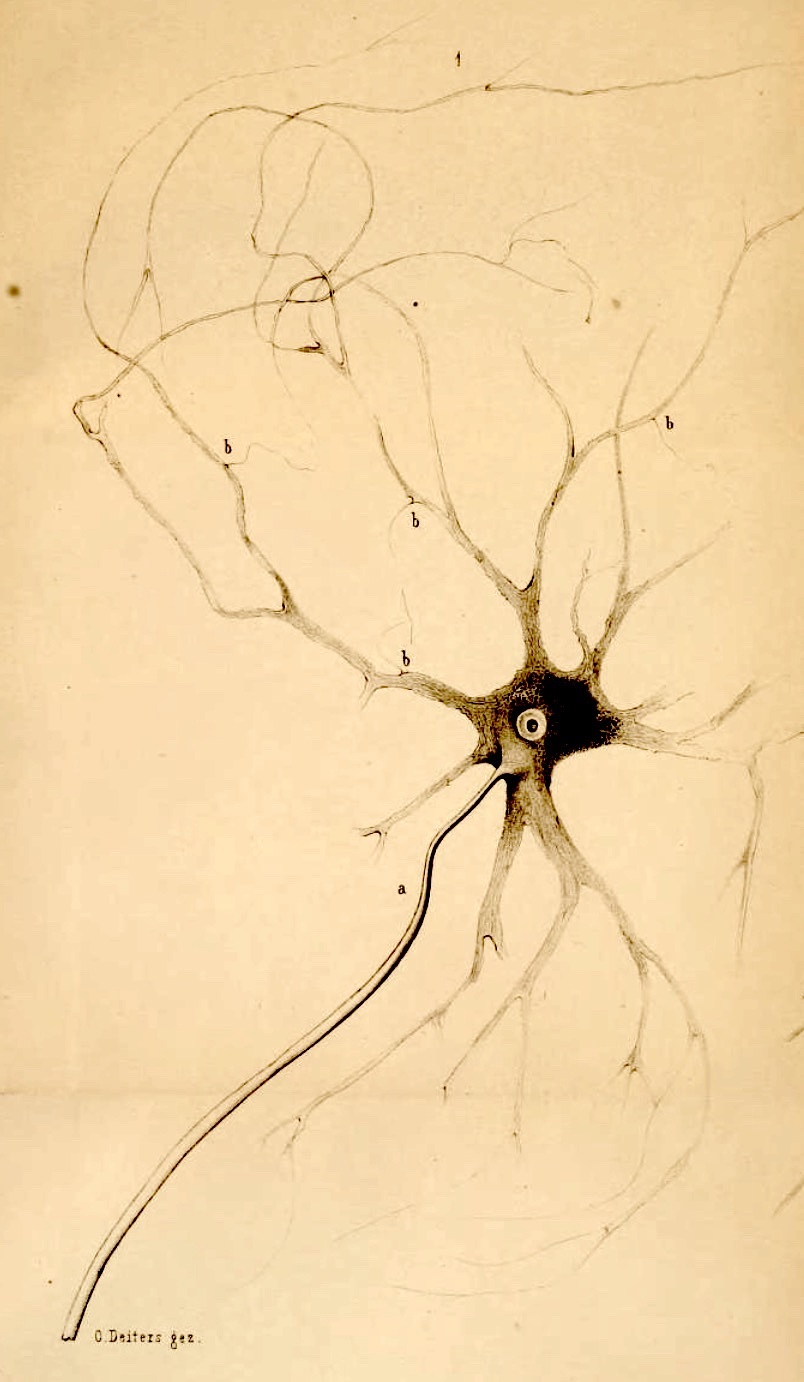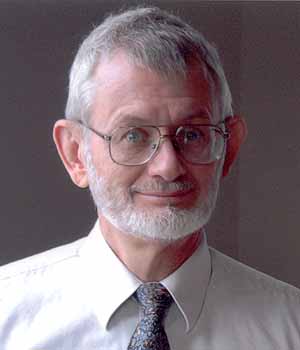- (Pop-up help sessions?)
- Review inflammation / meningitis
- Topics related to axons:
- Axon dimensions
- Axoplasmic transport / shingles / rabies / tetanus toxin
- Peripheral nerve regeneration

- Nervous tissue
Here are three absolutely wonderful facts about nerve cells.
- The first and most wonderful fact about nerve cells is that, working together,
they can perceive and think and dream. This is
magic of the highest sort. (See my essay Cells-R-Us
for extended informal discussion.)
- The second wonderful fact is that each nerve cell, just like any other cell,
is essentially a bag of water, each surrounded by a fatty membrane and containing
an assortment of molecules. (What makes nerve cells special is what they do with their membranes.)
- Every cell has the potential to make a large number of different proteins.
- Nerve cells specialize in those proteins which comprise and regulate membrane-associated channels for various ions (principally K+, Na+, Ca++and Cl-), as well as proteins for secreting and recycling neurotransmitters which interact with ion-channel proteins.
- The first and most wonderful fact about nerve cells is that, working together,
they can perceive and think and dream. This is
magic of the highest sort. (See my essay Cells-R-Us
for extended informal discussion.)
- Every cell has an electrical potential difference across its membrane.
- Nerve cells process and transmit information by manipulating local changes in membrane potential.
- All of a nerve cell's membrane-associated proteins are potential targets for toxins and for pharmacological intervention which modify signal transmission.
- Discussion of electrical activity.
- Associated discussion of myelin and saltatory conduction.
- Cells of all different kinds differ from one another not only by their pattern of protein manufacture and use, but also by how they organize themselves by attachment to other cells (i.e., by organization into tissues).
- Nerve cells specialize in cell-to-cell contacts which stretch over vast (in cellular terms) distances -- seldom connecting cell-body to cell-body but instead extending extremely lengthy processes (axons and dendrites) to make distant contacts.
- The study of neuroanatomy consists largely of understanding the routes travelled by axons.
- The nervous system is vulnerable to all sorts of accidental damage which interrupt specific pathways of communication and/or local sites
of information processing.
Perhaps the most surprising attribute of bones, at least for beginners, is that bones are alive. Bones are not just dead, mineralized structural elements. The material of bone is constantly being worked-over (remodelled) through the activities of the cells contained within. And this ongoing activity is an essential part of the body's overall metabolism, maintaining appropriate calcium ion concentrations throughout the body. Bones retain, in the lamellae of Haversian systems, a "record" of past growth, remodelling, and repair.
- Skeletal muscle is organized to enable production of rapid, coordinated, powerful force.
- The force is generated by interactions within a highly-structured array of protein molecules.
- The rapid coordination of force throughout the entire volume of a muscle fiber is accomplished through action potentials.
- Muscle fiber action potentials are fundamentally similar to axonal actional potentials.
- Contents for traditional curriculum
- Image index for this website
- If you have a taste for history, see Eponyms in histology.
SEARCH THE SITE:

Comments and questions: dgking@siu.edu
SIUC / School
of Medicine / Anatomy / David
King
https://histology.siu.edu//LincolnScholarsProgram/17Oct.htm
Last updated: 18 January 2023 / dgk
